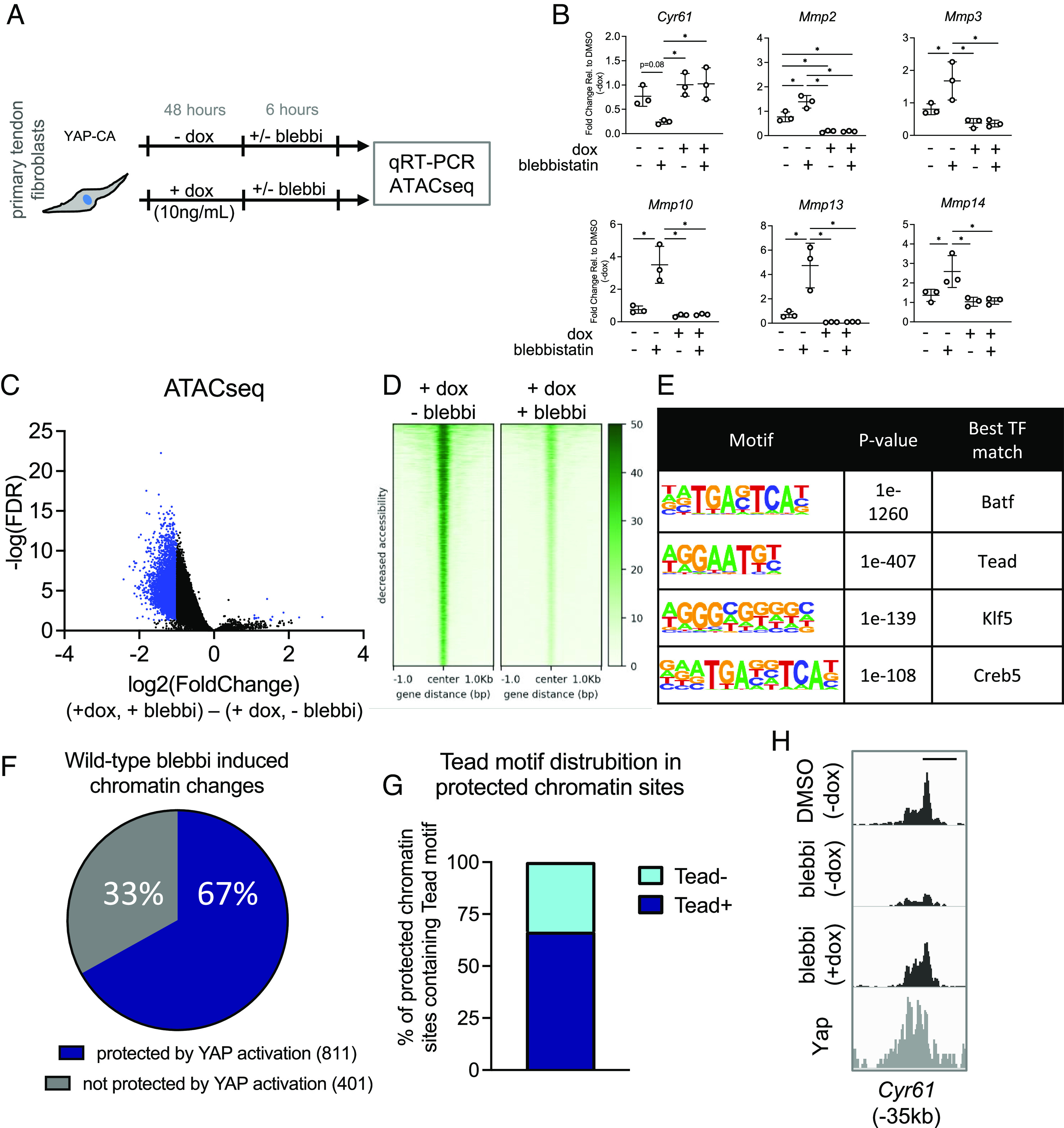Fig. 5.

Activation of Yap signaling protects against catabolic changes from loss of cellular tension by maintaining chromatin accessibility at mechanoresponsive loci. (A) Approach to examine whether Yap gain-of-function could attenuate transcriptional and epigenetic changes following loss of tension. (B) qRT-PCR analysis of tendon fibroblasts following Yap overexpression and blebbistatin treatment (n = 3 biological replicates). (C) Volcano plot from ATACseq analysis showing differentially accessible genomic loci (adjusted P value ≤ 0.05 and a fold-change of ≤ −1 or ≥ 1) in blue (n = 3 biological replicates). (D) Heatmaps of chromatin accessibility changes following blebbistatin treatment. (E) De novo transcription factor motif enrichment analysis from the genomic loci identified in (C). (F) Percentage of chromatin accessibility changes in wildtype tendon fibroblasts following blebbistatin treatment that no longer changed in accessibility following Yap overexpression. (G) Distribution of the Tead motif in the protected chromatin sites identified in (F). (H) Representative ATAC data showing protection of chromatin accessibility changes in Yap overexpressing cells following blebbistatin treatment. Genomic distance represents distance from gene TSS. Scale bar represents 1 kb. *P < 0.05 evaluated by unpaired t test. Error bars represent SE.
